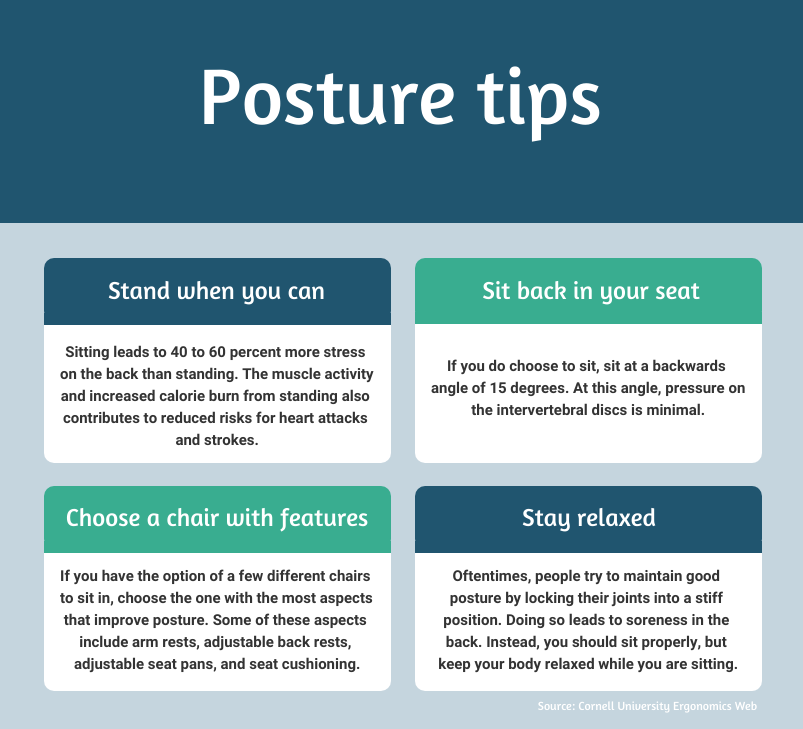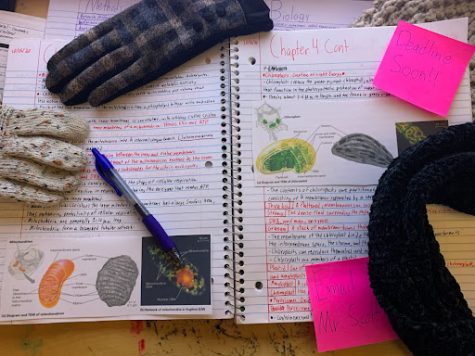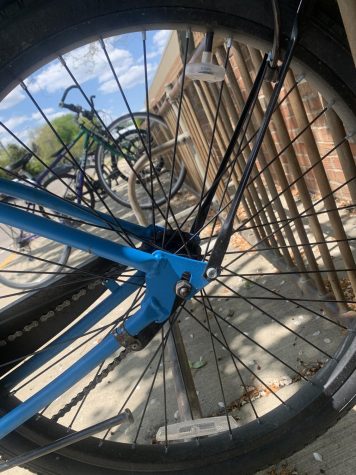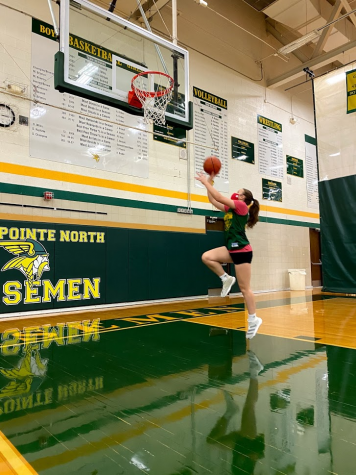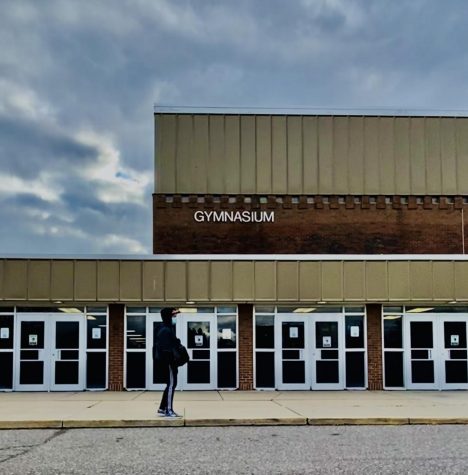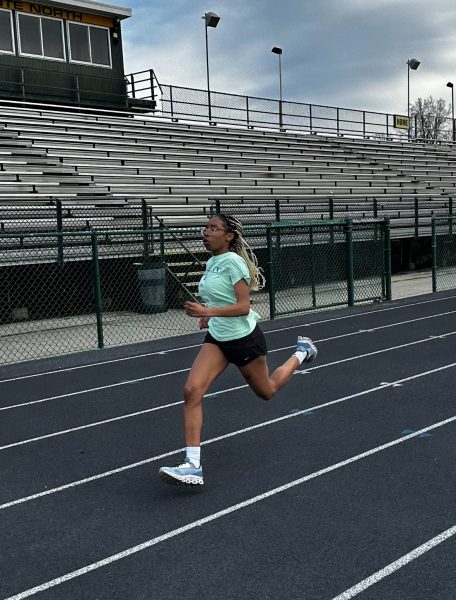The connection between posture and academic engagement
Photo credit: Michael Hart
March 4, 2021
Although senior Caleigh Murray says that she tries to maintain good posture throughout the school day, she still often goes home with back pain. She attributes this not to herself, but to the wooden desks that are found in many classrooms throughout the school.
In addition to the desks not promoting good posture, Murray says that they also do not allow her to pay attention in class or learn to the best of her ability.
Posture, science teacher Susan Speirs says, impact physical health as well as the ability of students to pay attention in class.
“Posture requires strength and body awareness,” Speirs said. “We may fidget in our seats as we try to maintain posture and might lose focus if we begin to slouch.”
The Cornell University Ergonomics Web lists some posture factors that can cause possible strain on the body. These include whether or not people have their feet planted on the ground while they are sitting, and the degree angle at which they rest their back. The guidelines recommend for people to keep their feet firmly planted and their back rested at a 15 degree angle in order to lessen stress on the back.
Speirs added that getting up and moving often can improve posture and enhance focus as well.
“Teachers who are posture-aware and notice that students are fidgeting in their seats integrate brain breaks that provide opportunities to move,” Speirs said. “Simply standing up can help some students regain focus.”
Although most seats in the school have been in use for over a decade, the emergence of new district-wide classroom rules as a result of COVID-19 has impacted seating arrangements in classrooms.
Many teachers, such as Speirs, had learning spaces in their classrooms that provided more comfortable chairs and couches to sit on so that students could better focus and engage with their learning. However, with rules saying that all chairs had to be uniform and facing the same direction to lessen the chance of COVID-19 transmission, Speirs had to rearrange her classroom.
“Because of the pandemic, teachers across the district were required to remove all of their learning spaces furniture and arrange the district desks facing the front of the room,” Speirs said. “This was required as part of the Covid-19 safety protocols. Learning spaces in a classroom can strengthen the class culture and help to strengthen relationships.”
Senior Esha Kumar had Speirs as a teacher last year and thought that she did a great job of keeping students engaged by providing learning spaces and advice. However, she thinks that more of her teachers should talk about the connection between posture and engagement.
“I definitely think we don’t talk about it enough,” Kumar said. “I think everyone has heard it informally that posture is related to how well you learn in class, but no one has really formally said it, nor have we actually learned about it.”


